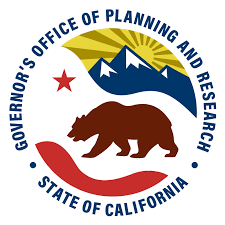CA OPR Automated Vehicle Principles for Healthy and Sustainable Communities
The California Governor’s Office of Planning and Research Automated Vehicles webpage lists potential negative outcomes of autonomous vehicle deployment, such as increases in congestion, commute times, vehicle miles traveled, and emissions, as well as the potential to induce additional sprawl, worsen health outcomes, and exacerbate social inequities. These negative outcomes may be avoided through planning and policies that align with “California’s automated vehicle policy and goals for climate, air quality, health, environment, land use, quality of life, and equity.” The Office released the following set of guiding principles for automated vehicle deployment:
- Shared-use
- Pooled
- Low-emissions
- Right-sized
- Part of an efficient multimodal system
- Efficient land use
- Complete and livable streets (by taking advantage of shared automated vehicles’ reduced need for parking and right-of-way space)
- Transportation equity
The guiding principles document was developed by the California Multi-agency Workgroup on Automated Vehicles, which included representatives from CalEPA, CalSTA, Caltrans, CARB, CDPH, CEC, DGS, DMV, Go-Biz, OPR, SGC, and CPUC.

